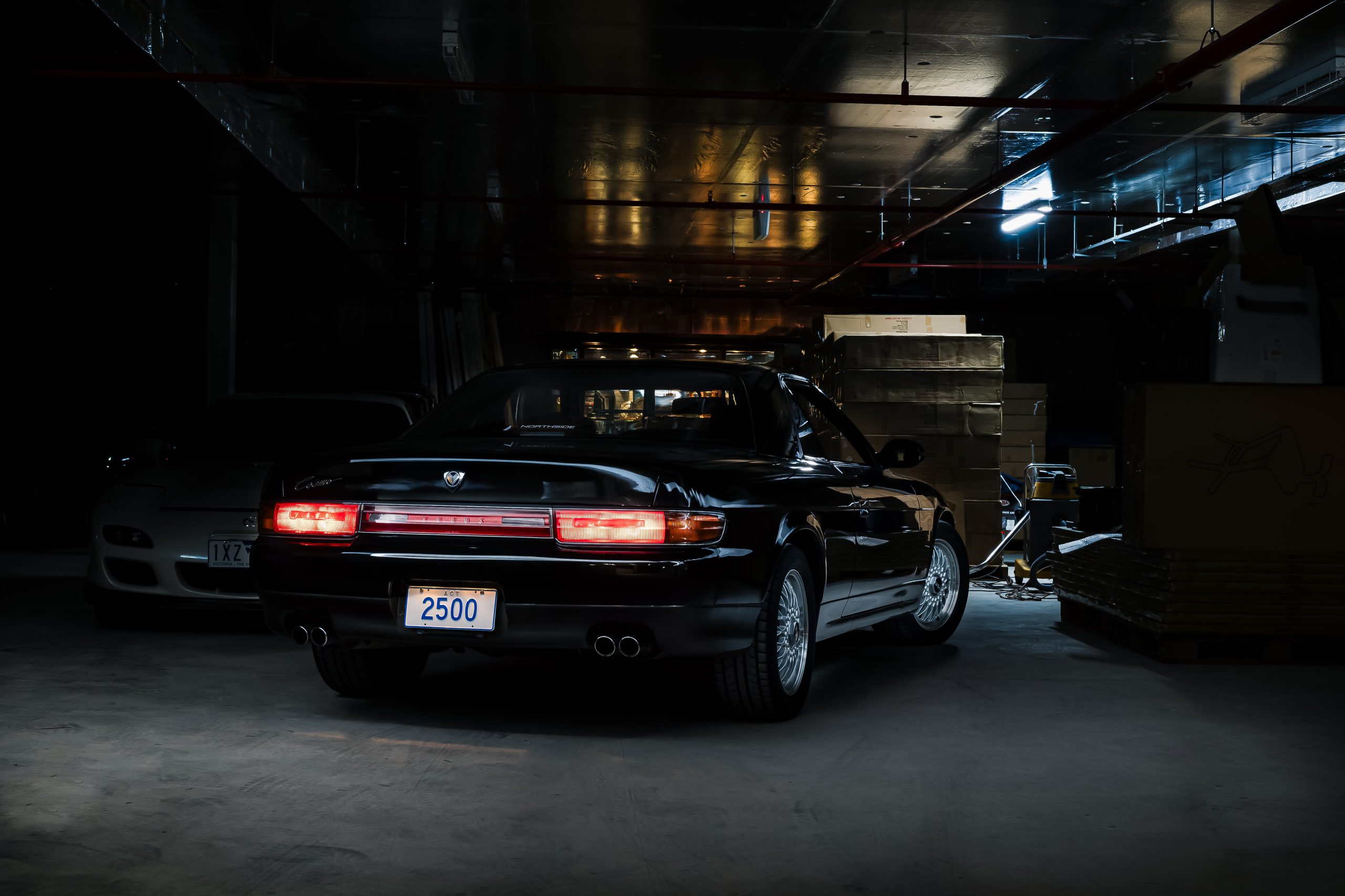In 1962, The Jetsons fit took to the airwaves. The Hanna Barbera spin on a family set in the distant future was welcomed fondly for its big ideas of floating homes and flying cars, impressing all and entertaining children the world over at a time when political tensions looked to set the world alight.
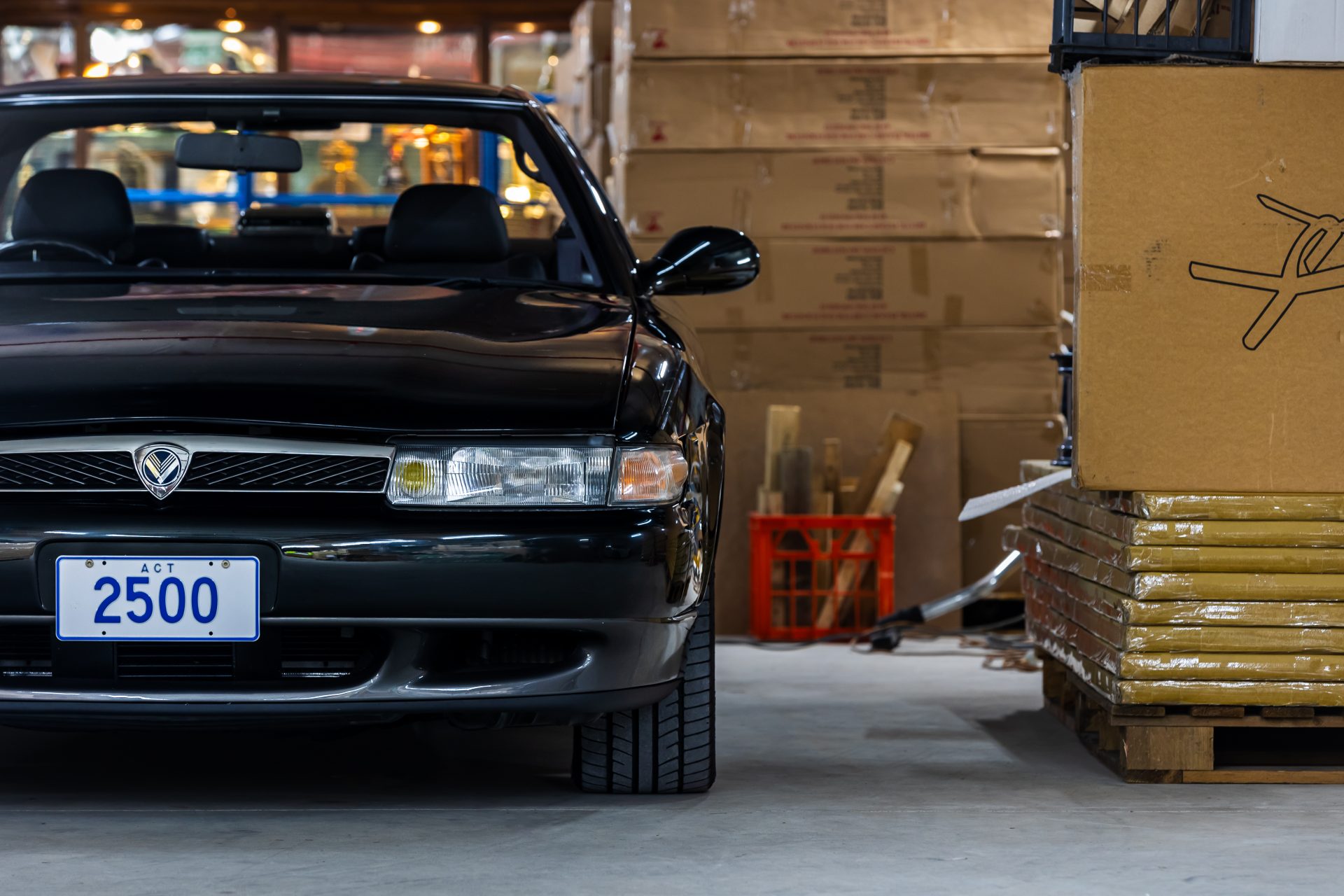
While that never came to pass, it would seem a designer at Mazda had their world changed forever from pen to tarmac. As the futuristic and inspiring world-first rotary took its first steps with the 1967 Cosmo L10B, so it would conclude 28 years later in the lines of the up-market and sleek triple-rotary magnificence of the 1995 Eunos Cosmo 20B.
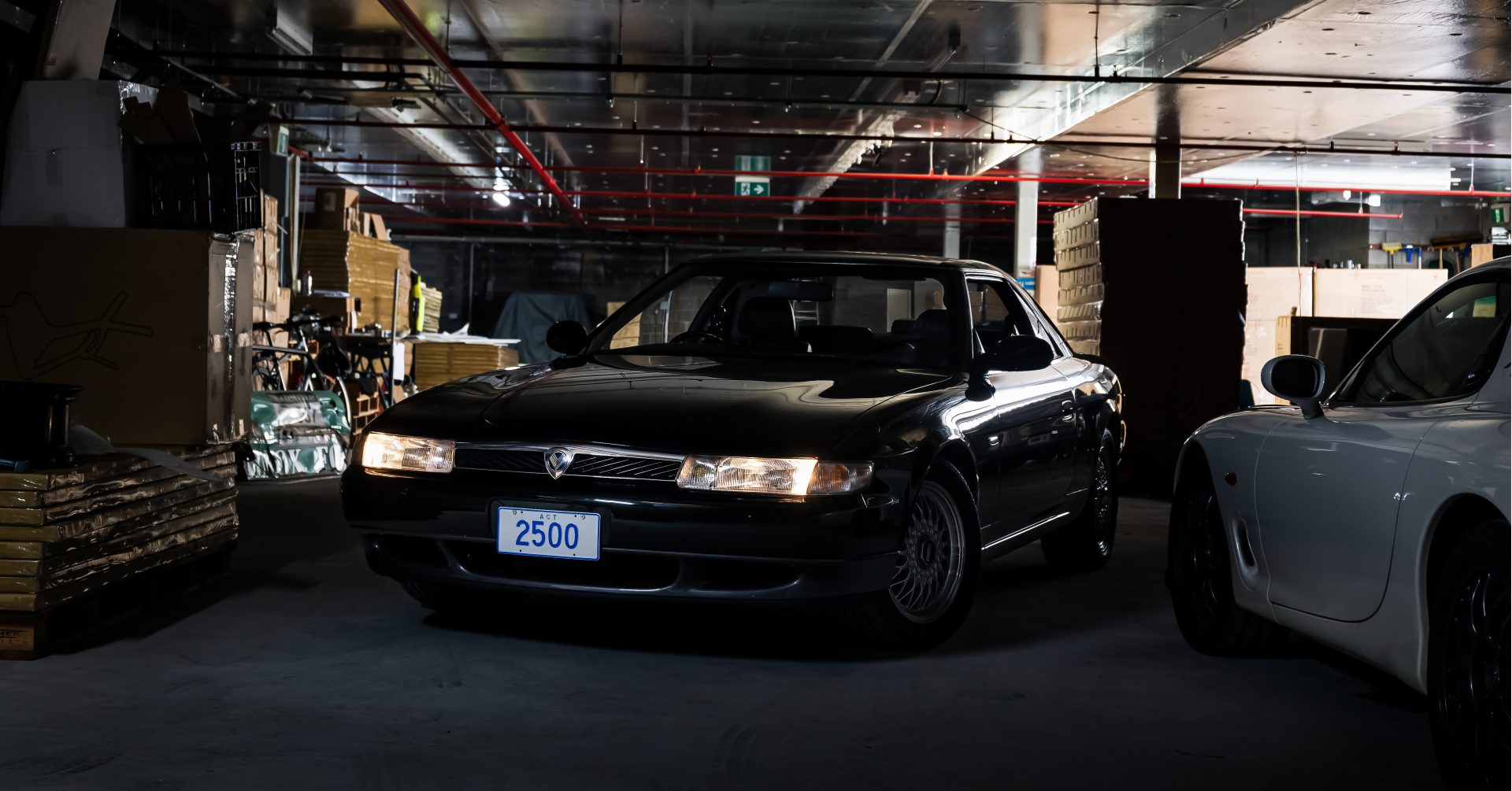
Barry draws upon The Jetsons in his visual appreciation of the 20B, born from an eye for designer furniture and focus on the best in both household wares and cars. Fellow ACT RX7 owner Ash Killard pointed him toward this vehicle via buyer Marcus Reid in Sydney and the rest was history. He notes it’s nothing short of a landmark car in the catalogue, having never sold a more expensive car in the lineup and only in the number of 3500 examples. Rare, indeed.
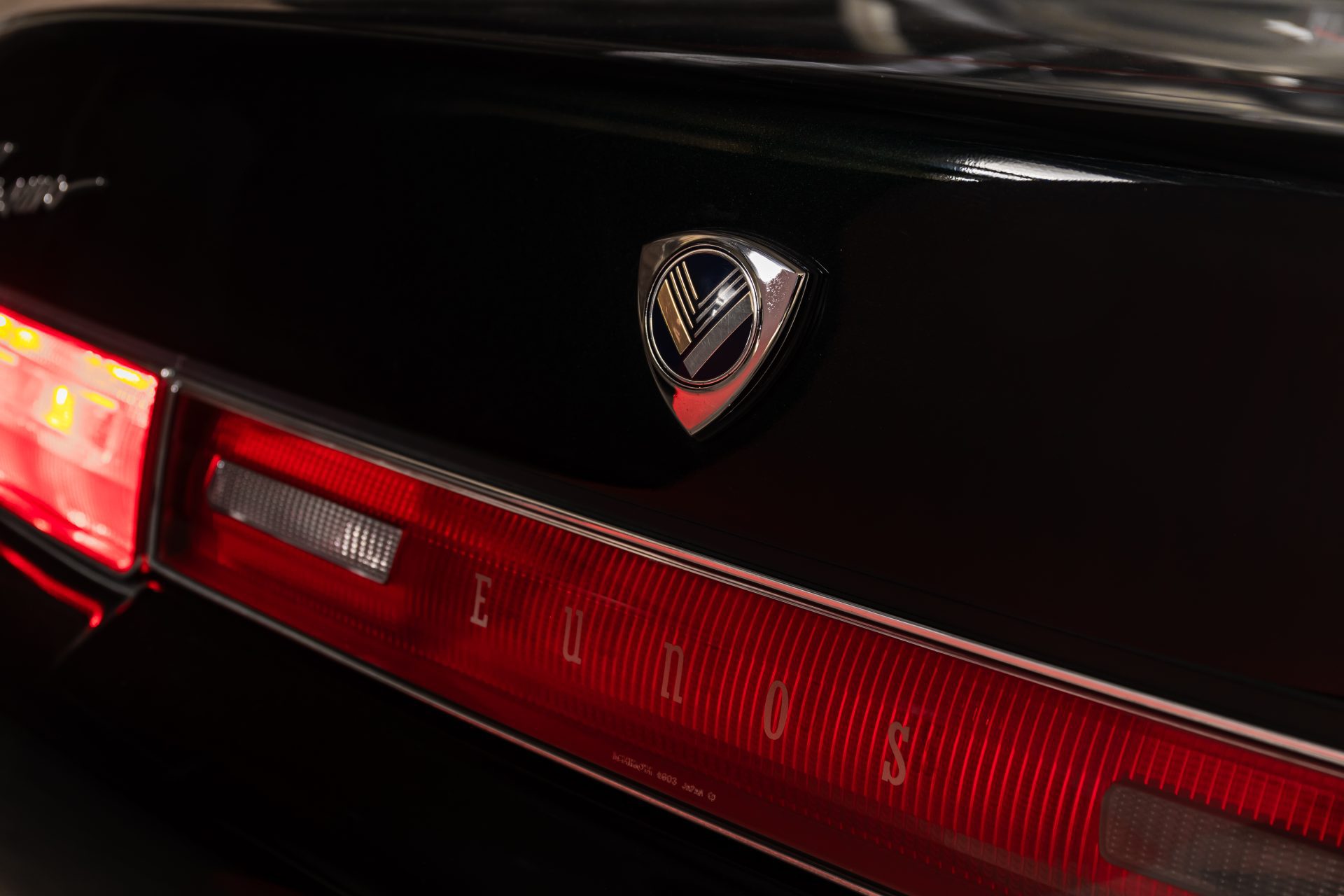
Beside design and rarity, Barry also appreciates speed. He should know – a winner of the Targa Tasmania in his trusty 1982 FB Series II RX7, and several notches in the belt at Canberra’s Summernats and various hill climb and track days; rotary has always been the backbone of his story. The Cosmo held focus as an initial twin turbo sequential engine, with Mazda aiming for the market held by Jaguar on release. It even had the first sat nav system. As we find out during the assembly of this story, the car is many things but smooth and fast as a cruiser is certainly forefront without performing like a lunatic down a straight.
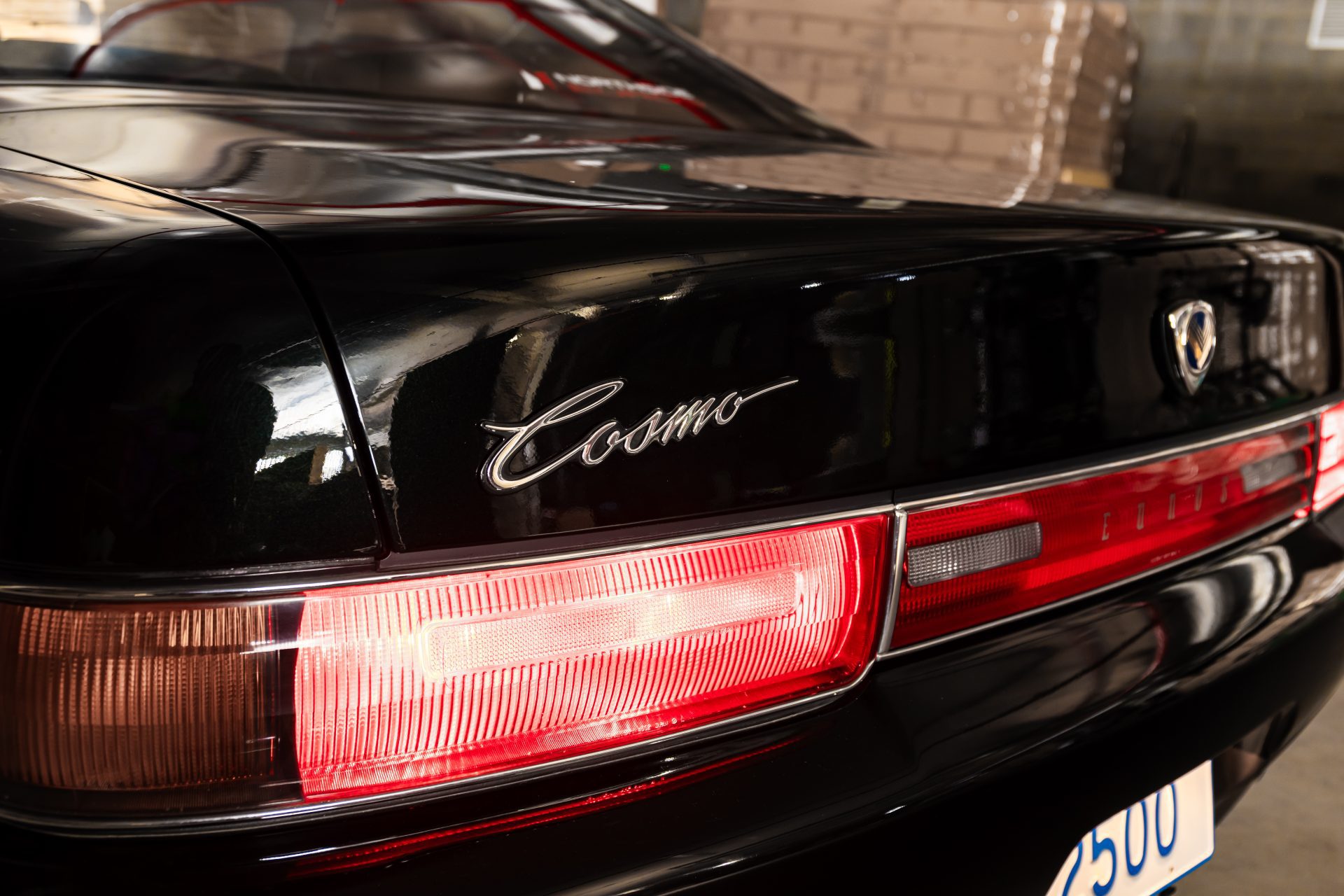
Like an old V8 muscle car, minus the vibration, it was the first triple rotary engine in a production car. An open engine bay owing to a shorter assembly means there’s more piping to intercoolers than there is in the engine and block. Barry notes from memory that it’s even got dual shock absorbers on the rear suspension. The Cosmo held firm in its heyday as a Grande Tourer – not the fastest, but super luxury, high speed, point to point cars. This example demonstrates the catalogue promotion to a tee with only 26,000 kms on the clock since new. The rims remain stock with the BBS sports pack it was originally assigned from the factory.
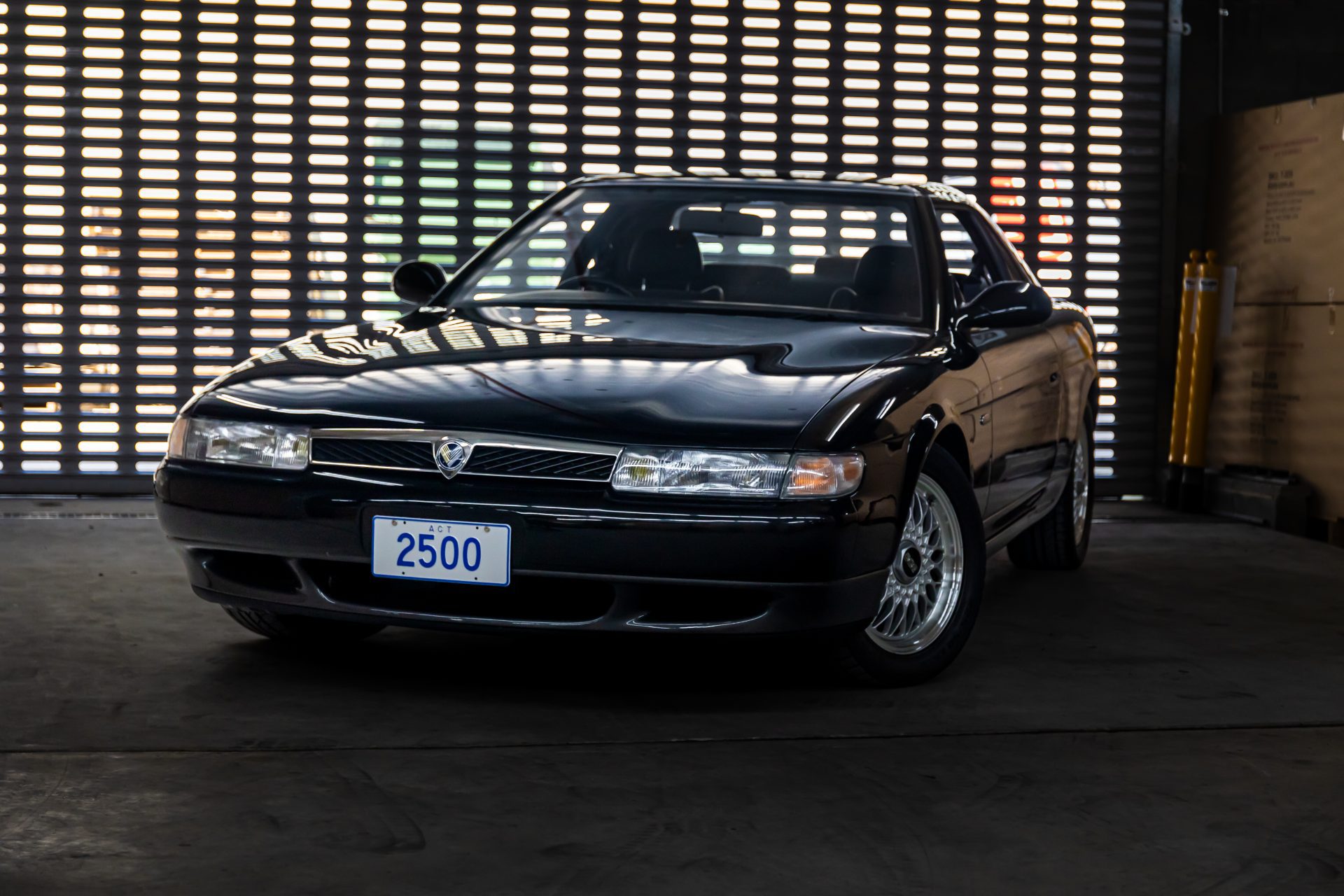
Which brings us to the interior. He notes his wife loves the dash; long and wide like a control panel before giving way to a half velour, half leather seat combination for a comfortable driving experience. In the rear, spacious and padded bucket seats permit a family to celebrate the best Mazda has to offer, today filled by a media crew.
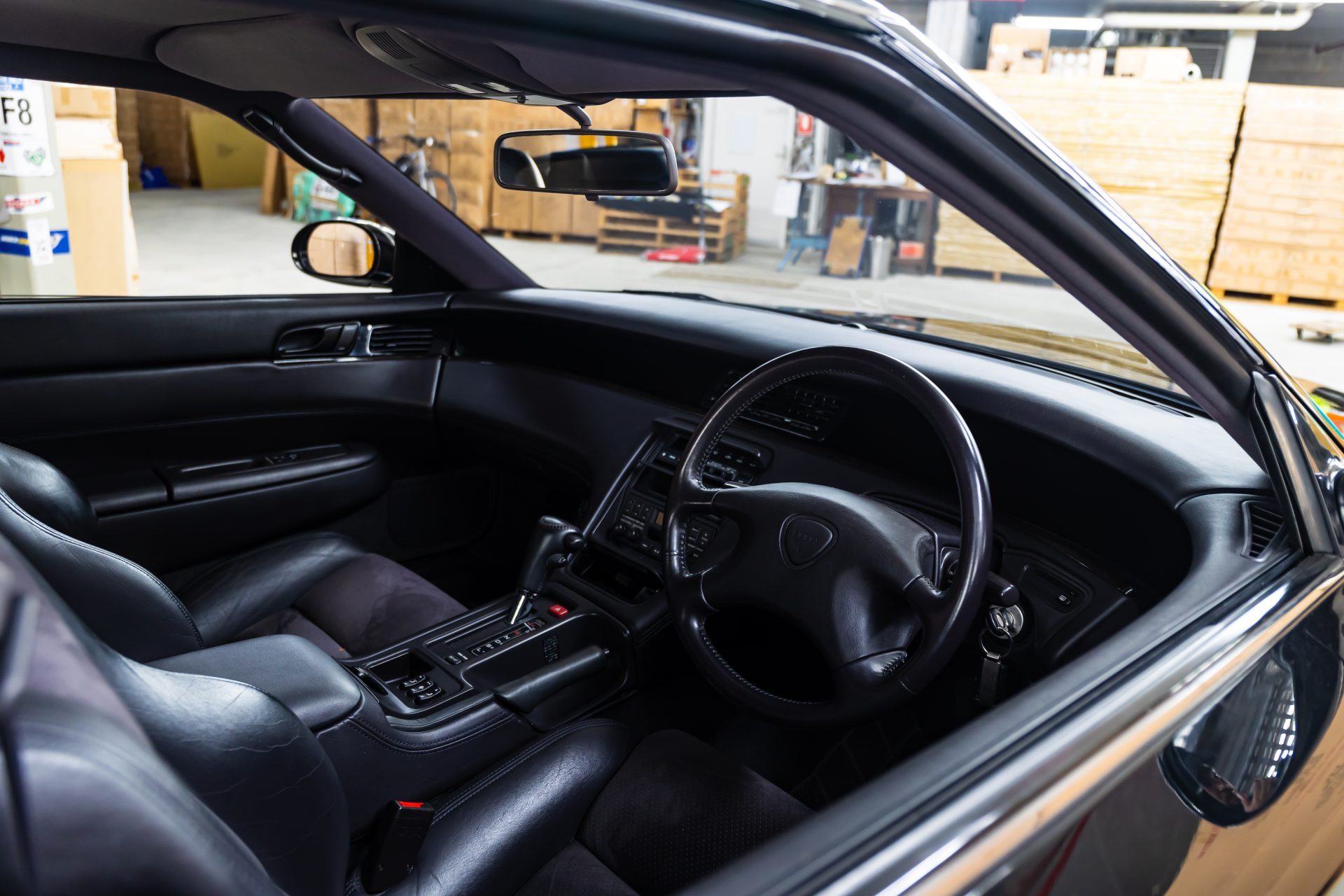
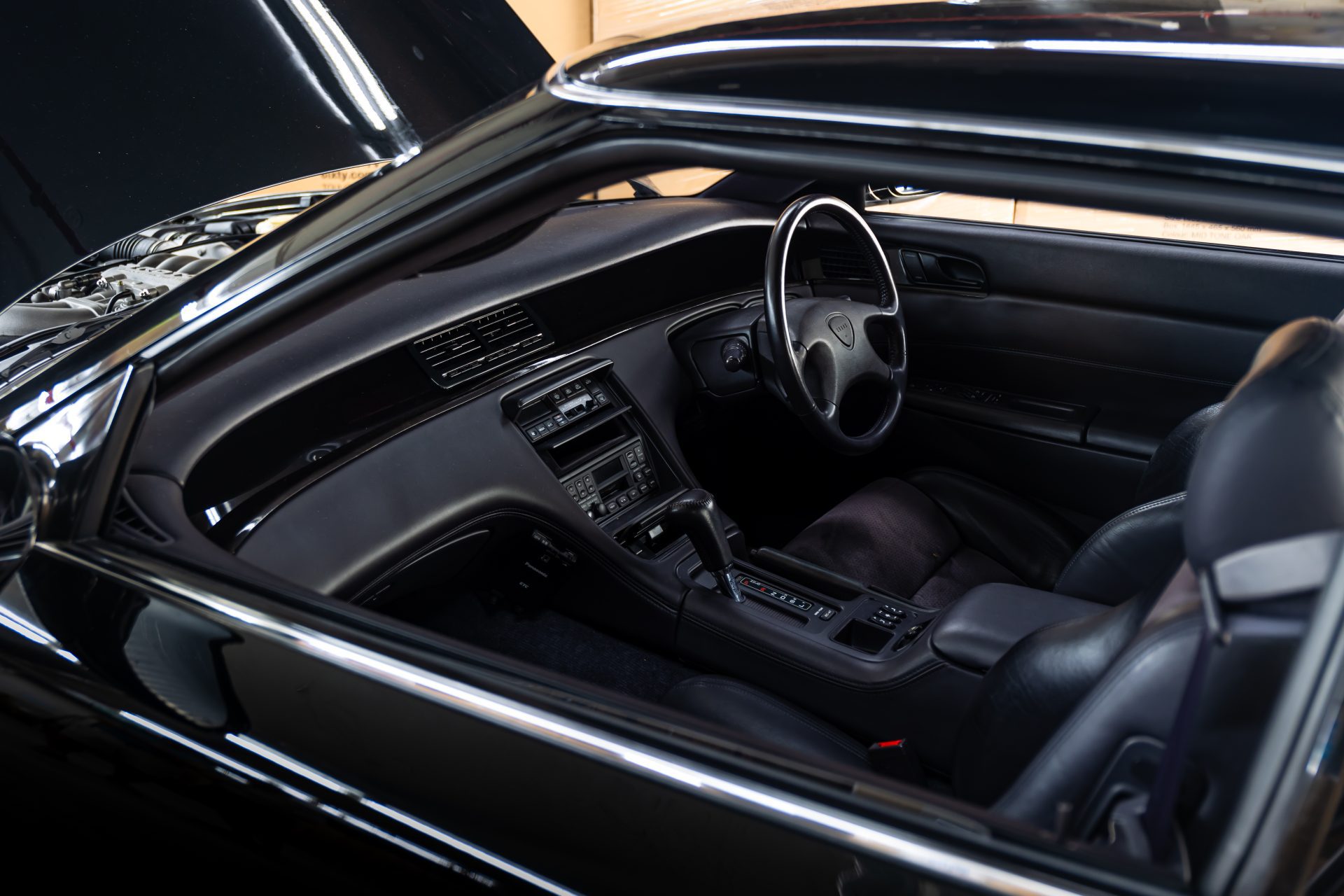
On reflection as to why the 20 B story met an early end, Barry points out that its downfall was the end of the economic boom in Japan. A market collapse and tax system coupled with the high sales price (research for this story returns several results well into the $90 + thousand range) would ultimately kill off any hope of a modern equivalent. In 2024, Mazda has only just matched this extravagant asking price in the form of the top-of-the-line large-platform CX90.
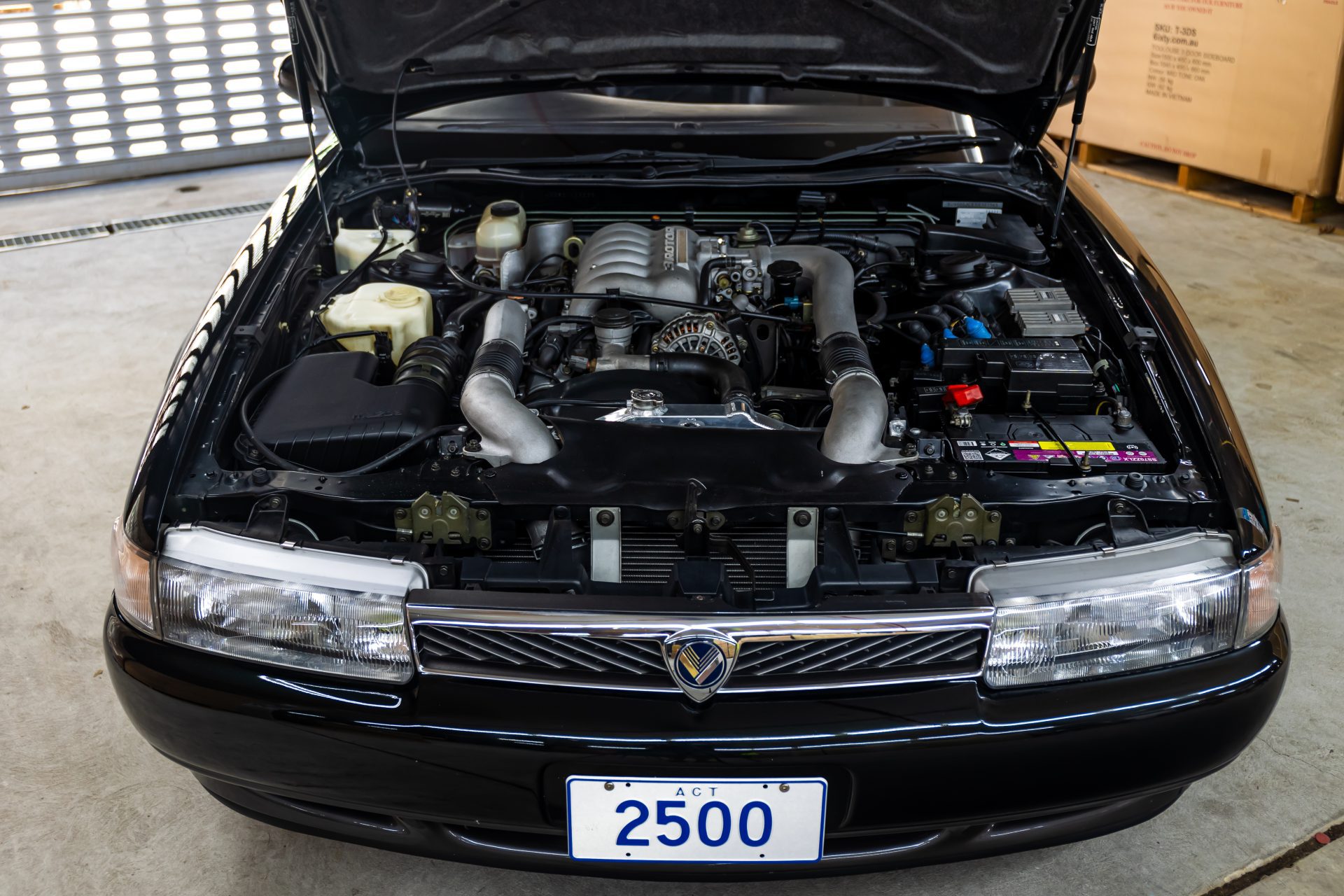
So why the love of rotary? We switch from tales of space age design and high prices to John Lennon – “life is what’s happening while you’re making other plans”. Barry got interested in a one make race series at a young age and took a liking to circuit racing. Originally his eye was set on the Honda series; but it turned out there wasn’t enough in number to populate the field. Of too great expense, the RX7 then stepped intothe field and a one make race series was born, much like the RX8 Cup today. With no prior knowledge of the rotary, it would take some time to stick and the circuit scene didn’t suit him at the time. Moving into rallying and a different skill set, Barry started off with a series one RX7.
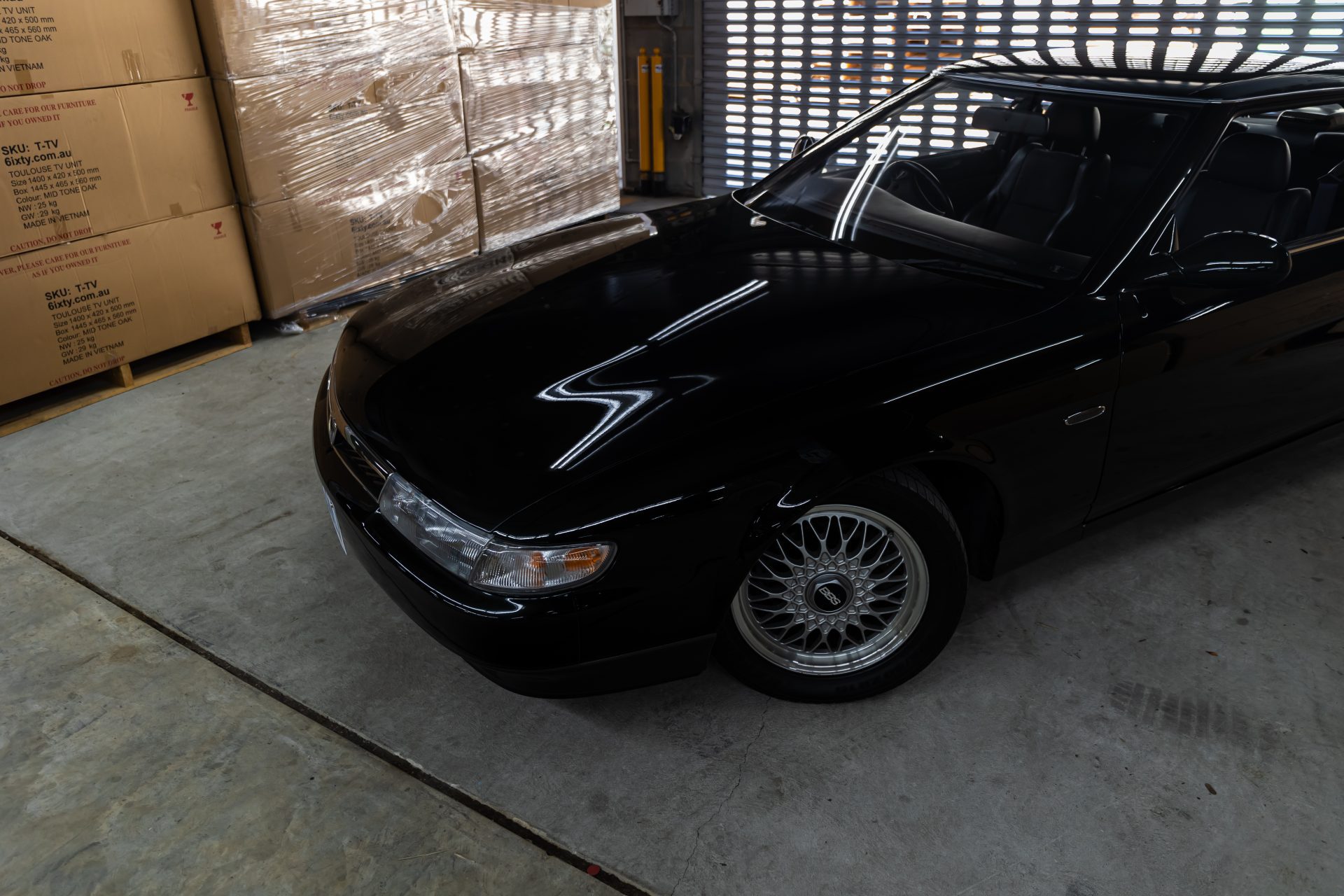
At the conclusion of the stage, he would look at the car and think of similarities to the mini E-Type Jaguar – a sculpture on wheels. Barry would later move to a Series 5, still in his possession minus the rally life but appreciated all the same. This was the start of his love of rotaries, and it’s a passionate continuation that lives on in his collection of many others.
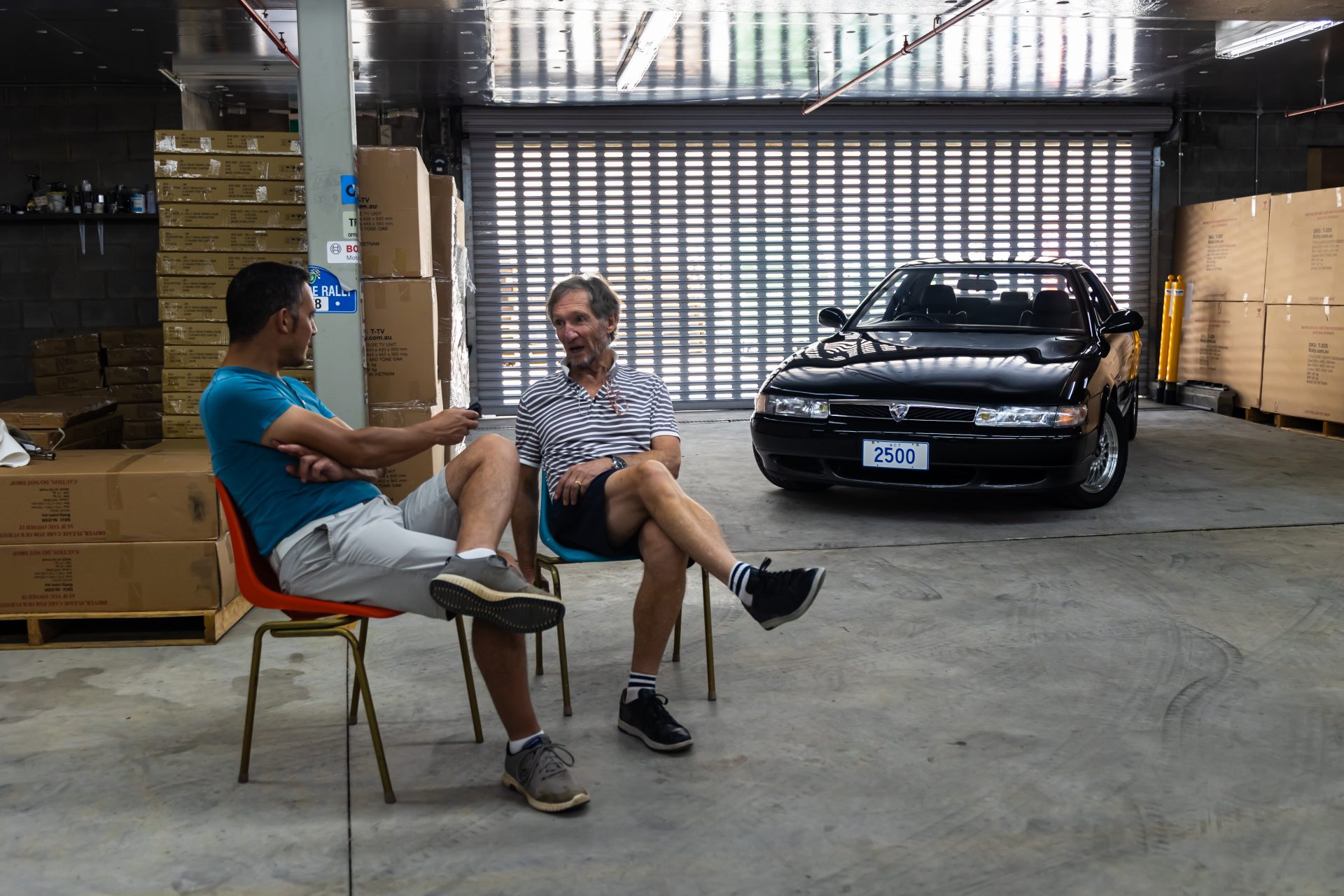
We cast a glance at the car as photographer and videographer move about. Barry is drawn on his thoughts of the RX7 replacement, and his answer isn’t surprising. The rotary engine and Cosmo to him is the closest in smoothness and power delivery to an electric propelled vehicle. As he puts it, electric has a huge advantage that you don’t have to build up the power as the revs increase. The vehicle has the maximum torque from square one, as the Cosmo demonstrates, and so whether an electric powered rotary takes centre stage in the modern era remains to be seen.
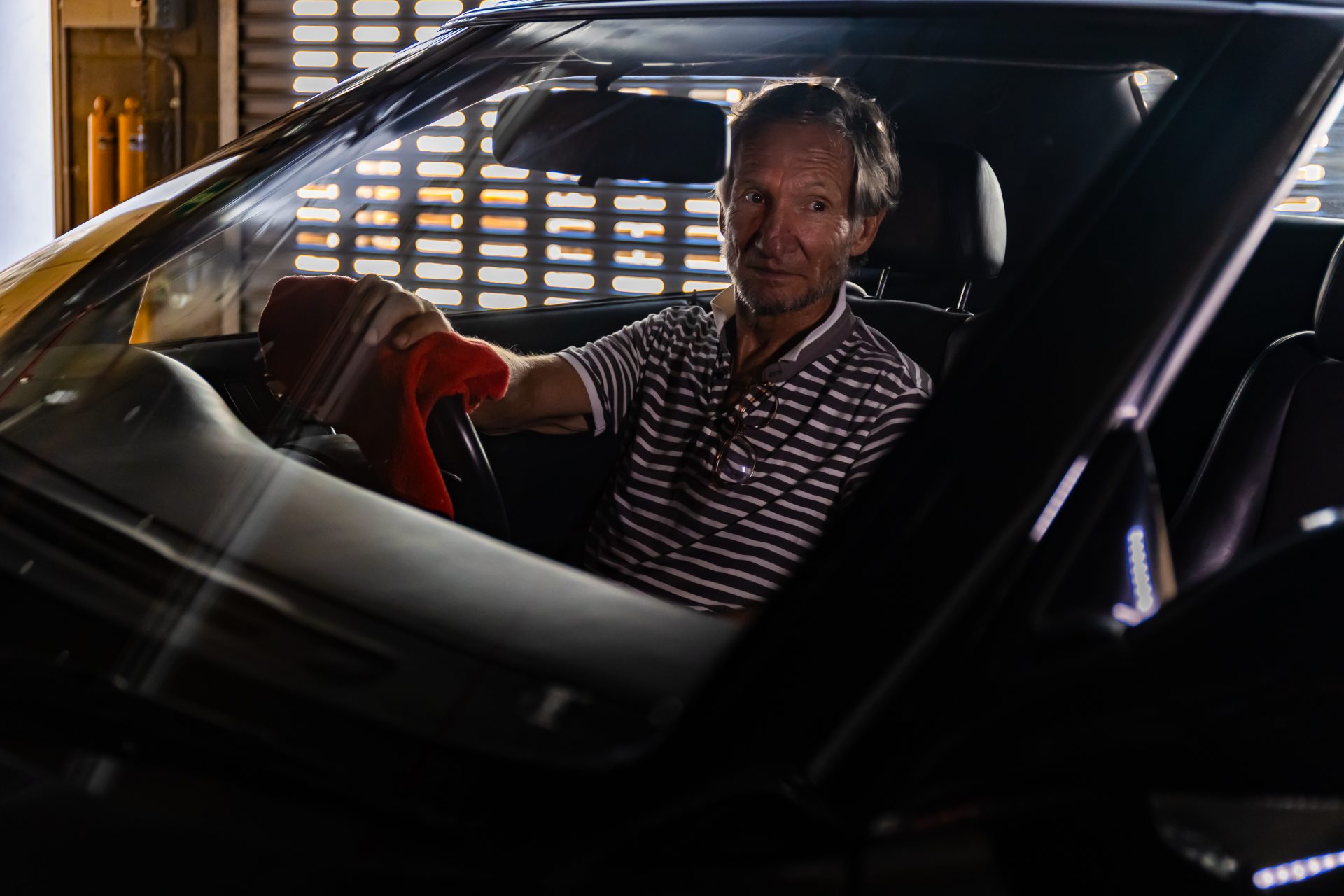
It’s time to wrap and return to our everyday lives. Barry draws us to his last appreciation of the car, which is the design. He points out that it’s like an old American Cadillac Coupe de Ville around the top of the windscreen, down to the boot and above the side windows. As a designer in other walks of life, his opinion in vehicle crafting is strong but at day’s end it boils down to an overall package of speed and flair.
“Cars are like children” he says. “They’re all different. Some are better behaved than others and this one’s a favourite”
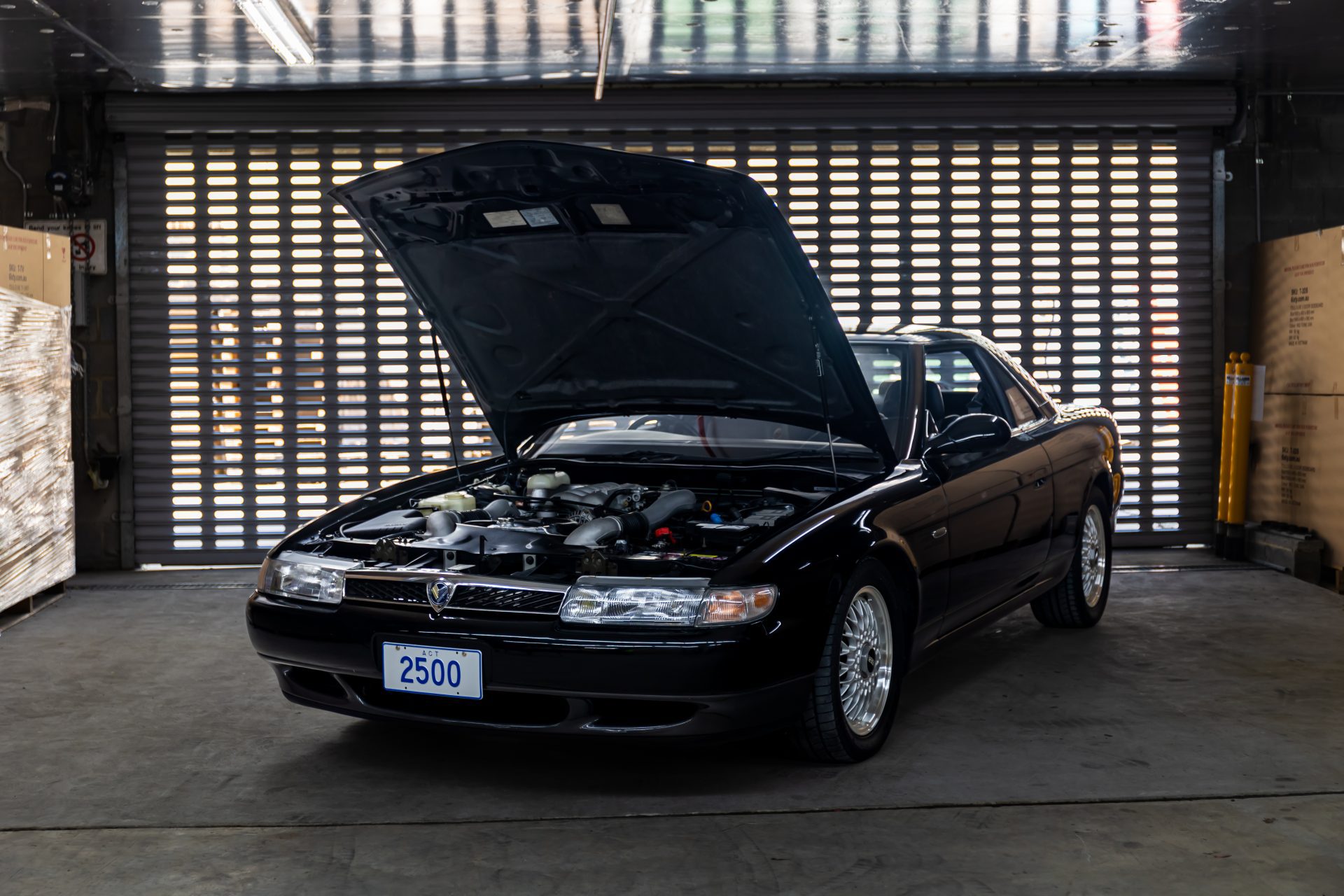
Photographed at Fox Garage Canberra by Ian Brown of Ians Visual Media feat Barry Faux. Article hosted by Kevin Ha of StreetScene. Words, research and story by Justin Bush of MazdACT for MazdACT Stories, February 2024.
For more great content, make sure to check out;
Ian’s Visual Media
StreetScene
Barry Faux’s Fox Garage Canberra
MazdACT
